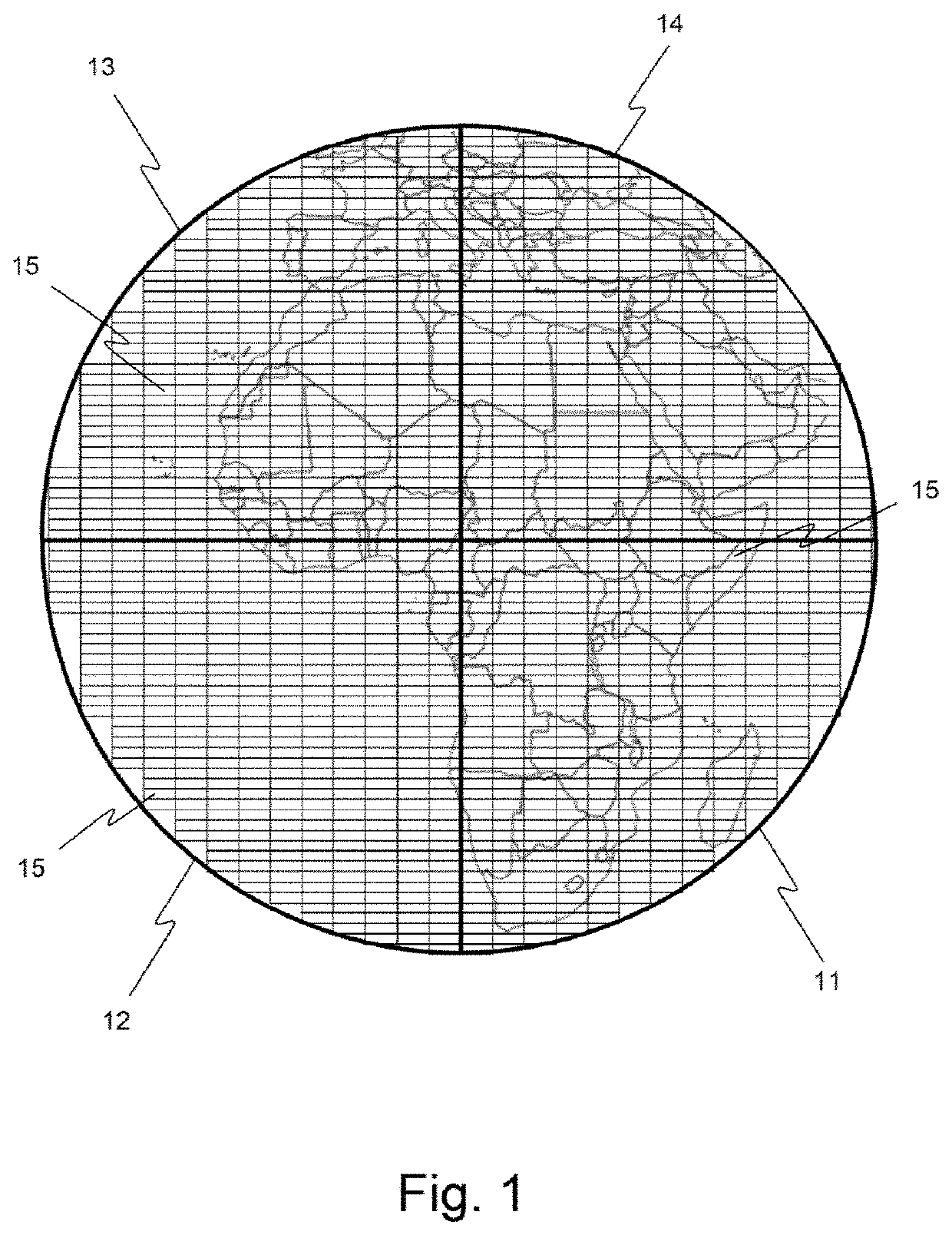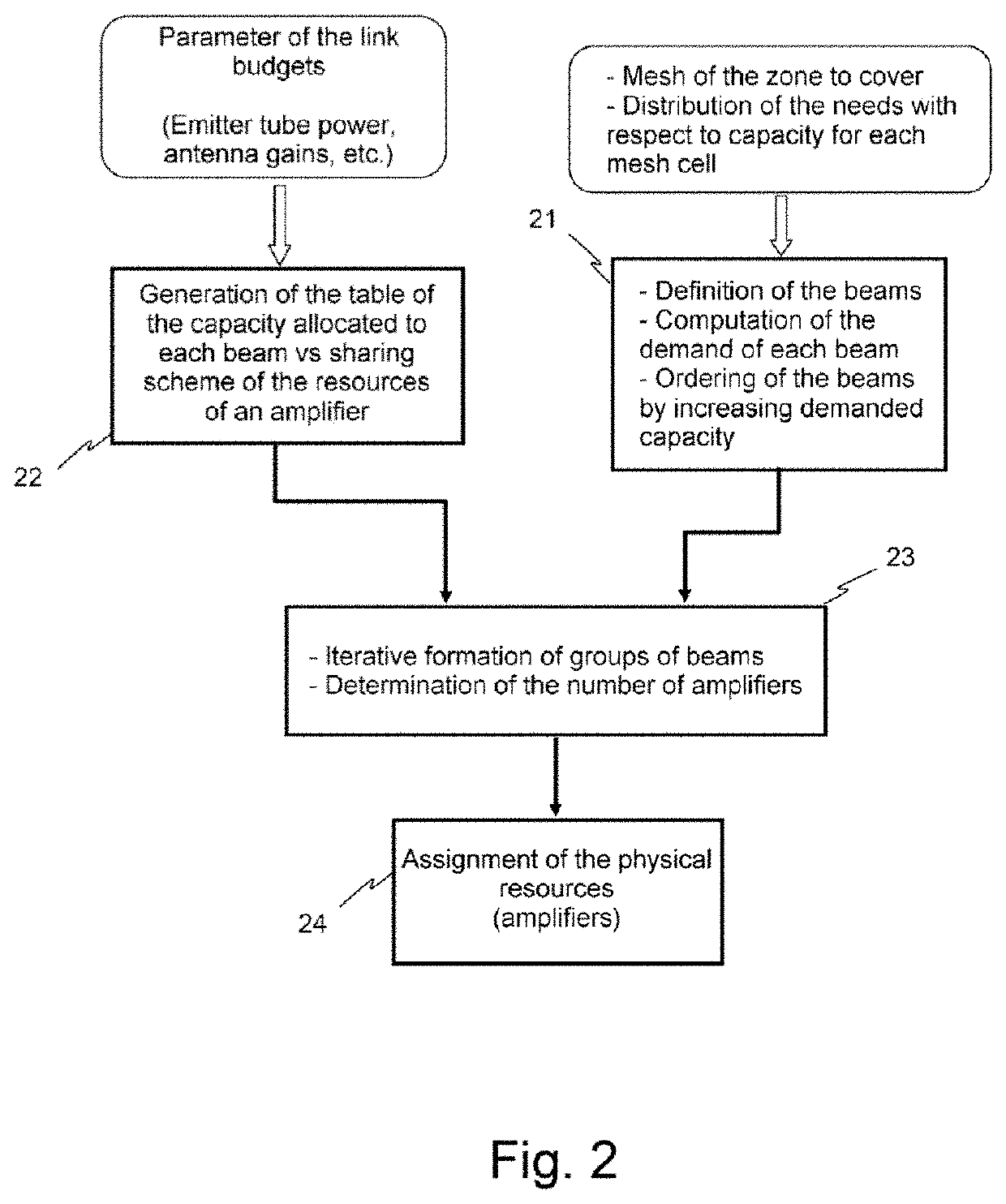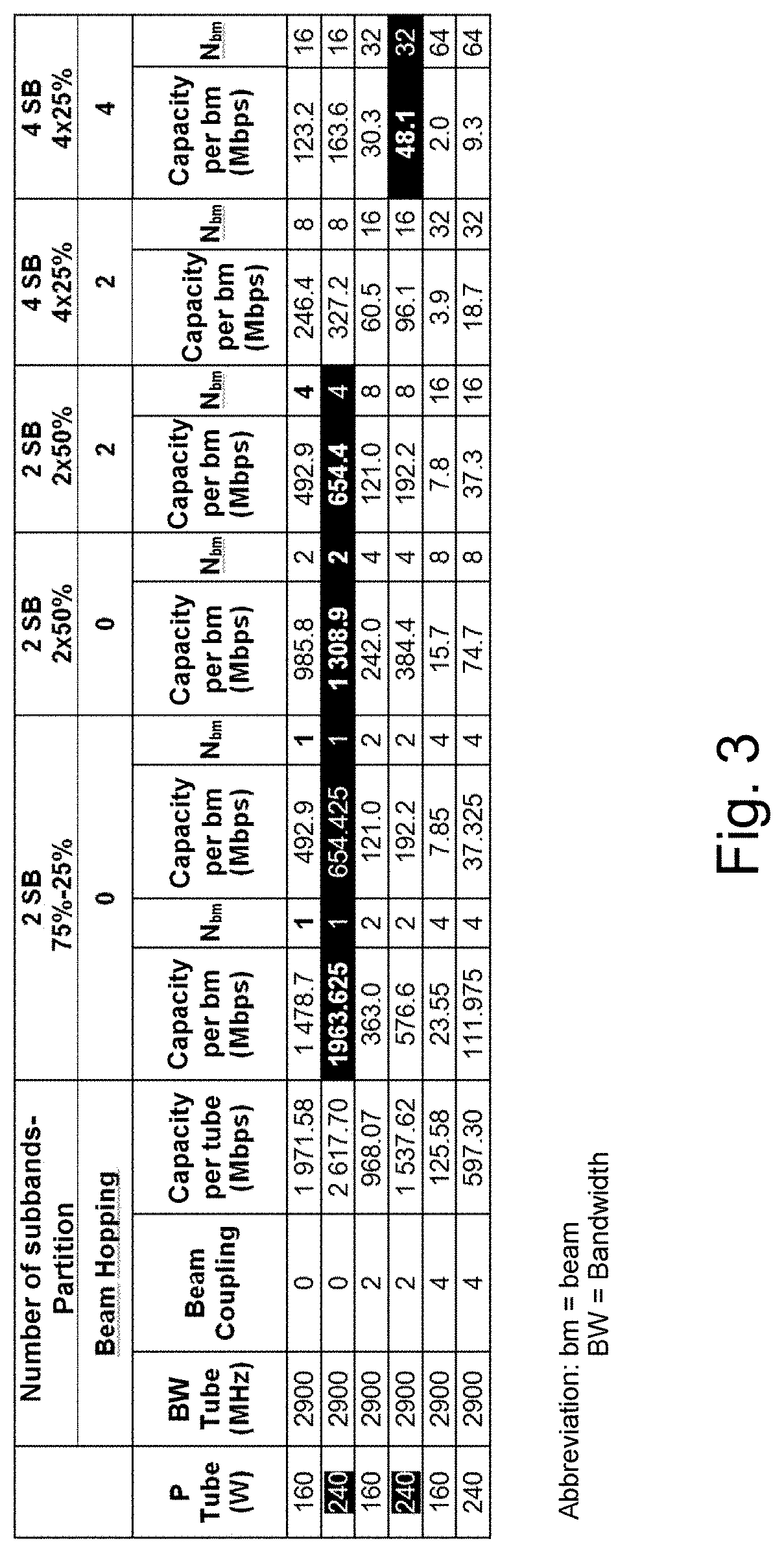Method for defining the flexible payload of a telecommunications satellite with low-interference-level beam hopping
a technology of telecommunications satellite and beam hopping, applied in the field of communication satellites, can solve the problems of underexploited total capacity (, . the maximum throughput) allocated, non-uniform distribution of communication capacity over the covered area, etc., and achieve the effect of level of flexibility
- Summary
- Abstract
- Description
- Claims
- Application Information
AI Technical Summary
Benefits of technology
Problems solved by technology
Method used
Image
Examples
Embodiment Construction
[0068]FIG. 1 shows an example of coverage of a geographical zone with a geostationary satellite having an antenna structure comprising four antennas 11-14, covering the zone in question uniformly.
[0069]As illustrated in the figure, each antenna 11-14 radiates elementary electromagnetic beams of rectangular geometric shape. The radiated beams thus, elementary geographical zones, or spots, arranged rectilinearly in juxtaposed rows and / or columns.
[0070]Each elementary beam thus radiates an elementary geographic zone 15 in which a number of users may be found, this number being a priori variable in particular depending on the covered elementary zone, which may for example be located on solid earth or at sea.
[0071]This four-antenna structure is considered here merely to give a context to the description, and must not be considered as being intended to limit the scope or extent of the invention. In particular, it is possible to deploy the method according to the invention on satellites, w...
PUM
 Login to View More
Login to View More Abstract
Description
Claims
Application Information
 Login to View More
Login to View More - R&D
- Intellectual Property
- Life Sciences
- Materials
- Tech Scout
- Unparalleled Data Quality
- Higher Quality Content
- 60% Fewer Hallucinations
Browse by: Latest US Patents, China's latest patents, Technical Efficacy Thesaurus, Application Domain, Technology Topic, Popular Technical Reports.
© 2025 PatSnap. All rights reserved.Legal|Privacy policy|Modern Slavery Act Transparency Statement|Sitemap|About US| Contact US: help@patsnap.com



